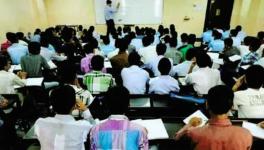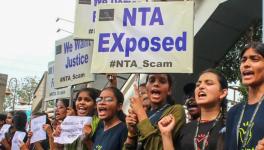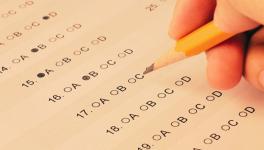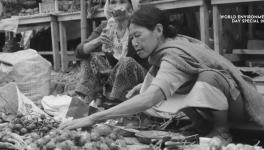Poor Girls must be Provided Special Assistance in Education During Pandemic
Support for education of girl child will only improve India’s future, writes GYAN PATHAK.
THERE is no known specie in this world whose women-kind is so badly treated by its men as our own. At times of crisis, it is women and girls who lay down their lives for the wellbeing of the rest of the members of the family, yet, we go on treating them inequitably.
The COVID-19 crisis has aggravated the situation to an unprecedented level.
Millions of poor girls are suffering the brunt of the economic crisis with millions of them having no prospect of returning to school. They are thereby excluded from all hope of progress. We must provide for their education before we are truly stricken by the after-effects of the pandemic. We have seen that lockdown in the country made everything come to a grinding halt.
The wheels of the economy stopped; millions of people lost their means of livelihood and food security at the household level was compromised. The morsels of food were given to the men before the women and to the sons before the daughters. This bias against women and children still carried within the Indian household is an open secret.
The morsels of food were given to the men before the women and to the sons before the daughters. This bias against women and children still carried within the Indian household is an open secret.
Since anganvadis that operate under the Integrated Child Development Services (ICDS) were closed, children below the age of five could not be fed there, and neither could children above the age of five avail of the mid-day meals given in their schools during the pandemic. This has greatly impacted their health.
How much? That, we will know in the future when a distant survey is conducted and published, but this situation will only deteriorate unless the anganvadi centres and schools are reopened.
We know that 290 million children have been affected by the closures of school in the country.
Even where internet connections were available, the quality was so poor that it was impossible for students to attend online classes. Another issue was the availability of handsets or computers among poorer students.
Digital India failed to provide internet connectivity to all parts of the nation, preventing students from connecting to online classes conducted by many institutions during the lockdown. Even where internet connections were available, the quality was so poor that it was impossible for students to attend online classes. Another issue was the availability of handsets or computers among poorer students.
Owning a computer or a smartphone is still a luxury in poorer households. Moreover, an average Indian family has three children and smartphones and computers cannot be purchased for each one of them. In the instance that the household could afford one smartphone, it was shared among all the children. Once again, the bias against the girl child prevented her from being able to share this facility as well.
Many incidents of suicide were thus reported in the media. Only 26 per cent of girls in such poor families have access to mobiles and internet to attend classes online as against 37 per cent boys.
The recent Annual Status of Education Report has estimated that there has been a sharp rise in out-out-of school children in the age group of 6-18. The figure has risen from 1.8 per cent in 2018 to 5.5 per cent in 2020, and among all children under 16, an increment from 4 per cent to 5.5 per cent was noted.
In the instance that the household could afford one smartphone, it was shared among all the children. Once again, the bias against the girl child prevented her from being able to share this facility as well.
Almost six million children are already out of school- a figure that may rise further due to economic insecurity. One of the reasons for this is that the admission process in the schools could not be completed due to COVID-19 lockdowns and containment measures. Moreover, parents decided to keep their children at home due to their inability to afford the cost of their educations.
Girl children were most affected because of the prevailing bias against the girl child. Boys are considered as future bread earners of the family and their education is thus supported first as against the girl child.
About 37 per cent of girls from poor households are uncertain about whether they would be able to return to schools when they reopen after the pandemic is over. The survey conducted by the Right to Education Forum, Centre for Budget and Policy studies and Champions for Girl’s Education has found in its survey that about 70 per cent of surveyed families did not have enough food, which puts education, and particularly girl child education, at maximum risk.
Many incidents of suicide were thus reported in the media. Only 26 per cent of girls in such poor families have access to mobiles and internet to attend classes online as against 37 per cent boys.
India was not performing well in girl child education indices even before the pandemic began. In 2006, 10.3 per cent of girls between the age of 11 to 14 were out of school. In 2018, the figure stood at 4.1 per cent, which was a significant decline. In 2018, 13.5 per cent of girls between the age of 15-16 were out of school, as opposed to more than 20 per cent in 2008.
In the beginning of 2020, 40 per cent of adolescent girls in the age group of 15-18 years were not attending school while 30 per cent of girls from poorest families have never set foot in a classroom.
This is a very sorry state of affairs. Our children have the fundamental right to an education, but compliance of the RTE has been very poor just before the pandemic struck the country. It was only 12.5 per cent across India according to a World Bank and UNICEF supported study primarily due to the downward trend in financing school education which has come down from 4.14 per cent in 2014-15 to 3.40 per cent in 2019-20.
The survey conducted by the Right to Education Forum, Centre for Budget and Policy studies and Champions for Girl’s Education has found in its survey that about 70 per cent of surveyed families did not have enough food, which puts education, and particularly girl child education, at maximum risk.
COVID-19 has drawn attention to the condition of the girl child. A recent disturbing trend observed during the pandemic is the inclination among poor families to marry their girl children off as soon as possible to do away with the perceived burden. This is an injustice that a biased mind is unable to perceive and involves marrying girl children off without consideration of many important factors including suitability of age of the bridegroom.
The Union and state governments must shift focus to facilitating better opportunities for the education of girl children in the present scenario. Investment In the education of the poor girl child must be increased in the coming budget itself. If more schools are not opened, means to connect to inline classes and conserve health at home must be provided. (IPA)
The article was originally published in The Leaflet.
(Gyan Pathak is a senior journalist. The views are personal.)
Get the latest reports & analysis with people's perspective on Protests, movements & deep analytical videos, discussions of the current affairs in your Telegram app. Subscribe to NewsClick's Telegram channel & get Real-Time updates on stories, as they get published on our website.
























